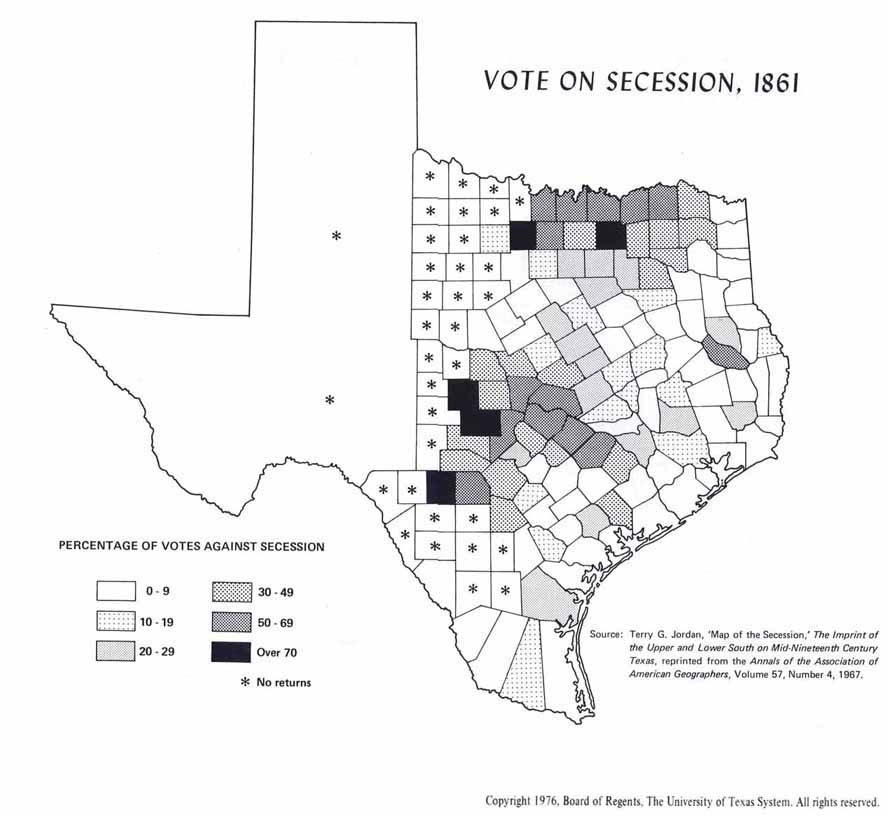Central and East Texas county lines in 1861 are similar enough to today's county map so it's fun to look back in time and examine how each county voted.
Caution. I find this map very non-intuitive. I would have titled and shaded it as "Percentage of Votes for Secession" rather than throwing the word "Against" in there and forcing me to process the map key ass-backwards. But I digress...
As a Brazos County guy, but raised in Collin and Grayson counties, I've spent most my life in some very pro and anti Secession parts of the state.
I'm surprised Angelina County (Lufkin) in East Texas was anti-Secession. I would have guessed deep East Texas to be all pro-Secession. Ditto for Comanche/Erath/Hamilton counties as I would have surmised those counties in that day to not be cotton country and therefore have no obvious economic reason to secede.
Thought some might find this interesting on this board.

[This message has been edited by Corporal Punishment (edited 6/18/2013 12:07p).]
Caution. I find this map very non-intuitive. I would have titled and shaded it as "Percentage of Votes for Secession" rather than throwing the word "Against" in there and forcing me to process the map key ass-backwards. But I digress...
As a Brazos County guy, but raised in Collin and Grayson counties, I've spent most my life in some very pro and anti Secession parts of the state.
I'm surprised Angelina County (Lufkin) in East Texas was anti-Secession. I would have guessed deep East Texas to be all pro-Secession. Ditto for Comanche/Erath/Hamilton counties as I would have surmised those counties in that day to not be cotton country and therefore have no obvious economic reason to secede.
Thought some might find this interesting on this board.

[This message has been edited by Corporal Punishment (edited 6/18/2013 12:07p).]


 . As mentioned previously counties with a large German population were anti-slavery as most had fled from the revolutions of 1848 and were politically liberal in thought.
. As mentioned previously counties with a large German population were anti-slavery as most had fled from the revolutions of 1848 and were politically liberal in thought.